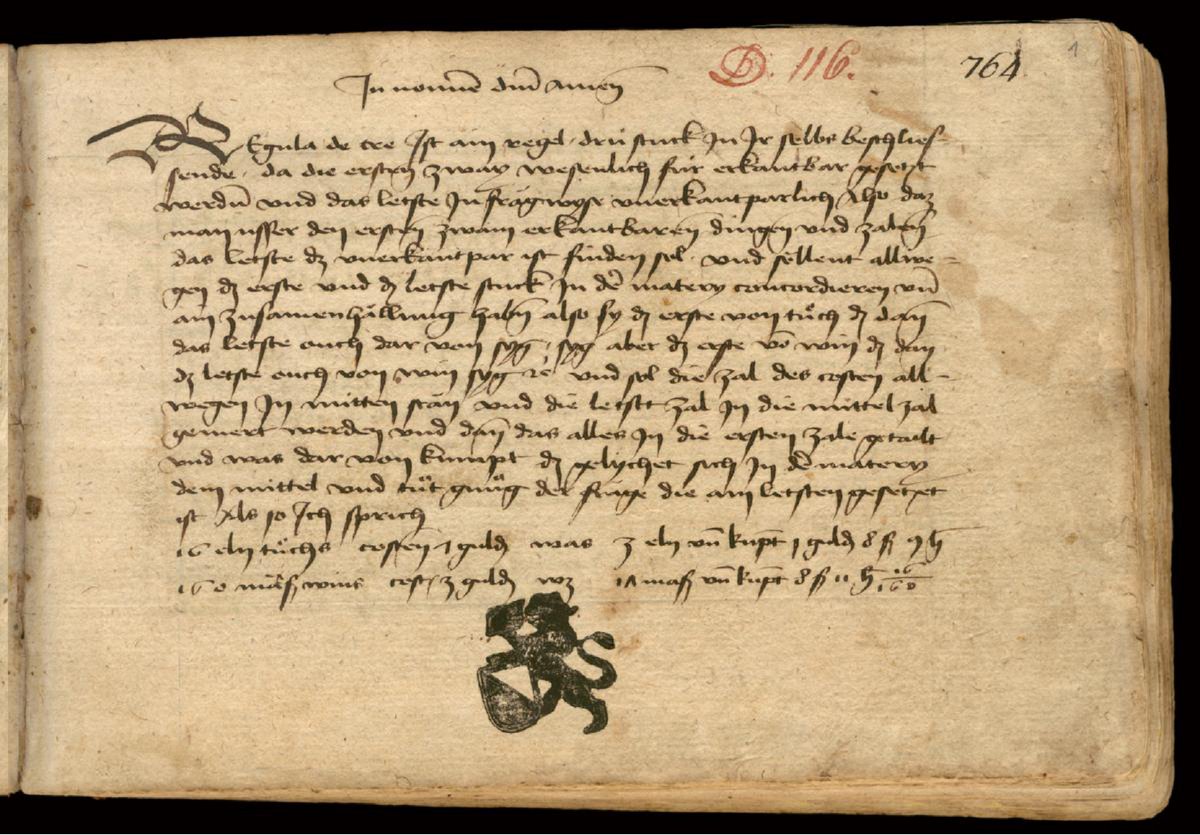Niklas von Wyle, Der Dreisatz

In unüberschaubarer Vielzahl liegen wissenschaftliche Studien vor, die sich mit der Kulturtechnik des Lesens befassen. Arbeiten, die sich mit dem Thema Rechnen befassen, lassen sich hingegen an einer Hand abzählen. Lesen und Rechnen stehen sich im Mittelalter noch sehr nahe, zumal auch Rechnungen als Texte beziehungsweise Sätze konzipiert werden. Und so besteht auch das Lehrbuch des Niklas von Wyle (gest. 1479) überwiegend aus Texten und Schaubildern, mit denen er versucht, die Regelhaftigkeit bestimmter Operationen zu illustrieren. Als Lehrbuch sucht die Schrift den Dialog mit dem Leser, der als Du adressiert wird und dem unentwegt Anweisungen erteilt werden, dies und jenes zu tun, und vor allem sich dieses und jenes zu merken! Mit Beispielen wird dem Leser gezeigt, wie es funktioniert und gleichsam, welchen Nutzen es hat, Rechnen zu lernen beziehungsweise zu können. Rechnen meint hier die Regeln des Dreisatzes beherrschen, die Kaufmannstechnik par excellence. Die Beispiele führen uns in die Welt des spätmittelalterlichen Handels: seine Güter, seine Preise und seine komplexen Organisationsformen. Das sind drei sehr gute Gründe, das Lehrbuch mittels Edition einem breiteren Publikum zugänglich zu machen.
Niklas von Wyle, The Rule of Three
There is a huge number of scientific studies dealing with the cultural technique of reading. Studies dealing with arithmetic, on the other hand, can be counted on one hand, though reading and arithmetic were still very closely interconnected in the late Middle Ages, especially since arithmetic was also conceived as texts or sentences. And so the textbook of Niklas von Wyle (d. 1479) also consists mainly of texts and diagrams with which he attempts to illustrate the regularity of certain arithmetic operations. As a textbook, the text seeks dialogue with the reader, who is addressed as "you" and is constantly instructed to do this and that, and above all to remember this and that! With examples, the reader is shown how it works and, at the same time, how useful it is to learn or be able to do arithmetic. Arithmetic here means mastering the rules of the rule of three, the mercantile technique par excellence. The examples take us into the world of late medieval trade: its goods, its prices, and its complex forms of organisation. These are three very good reasons to make the textbook accessible to a wider audience by a modern edition.
